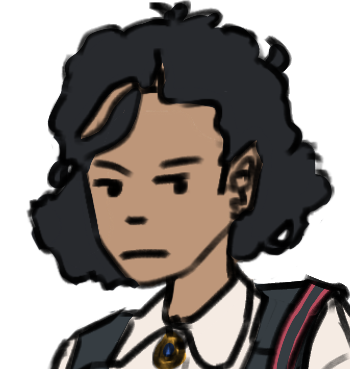NEW Story: Cocktail
Talking about Girl Scouts and Child Soldiers

This article is not part of Vekllei canon. It may be old, obsolete or just a bit of fun.
About half of Vekllei kids go through the ‘Blossom’ network of youth orgs at some point in their lives. Yeah, youth groups are popular nowadays. The Boy Scouts and Girl Guides of the United States are as mandatory as schooling in some states, and various Red Pioneers around the world test orthodoxy in Soviet and Red Chinese children.
The Girl Guides of the U.S. now boast catalogues of several hundred pages, selling thousands of Guides-branded items to their own members and Guide-friendly suburbs. Outwardly, the cartoons of Heinz and Carpenter (both of Western Family Magazine fame) might show off Guides assembling tents in jigger jackets and bright sashes, but they always seemed to neglect the impoverished girls priced out of the Guides organisation, like was so common at the time. There were a lot of poor girls in America by 2083.
Things are not much better for the Boy Scouts, who are only a few lethal armaments away from becoming paramilitary. They worship the flag and guard America’s character. Following the catastrophic Sino-American nuclear exchange, the Boy Scouts were enlisted in Civil Defense, an order that would kill many times more boys than the bombs ever did. You had kids being killed protecting grocers in food riots, and disappearing en masse as the cities collapsed. It was absurd.
So in the search for an analogue to Vekllei’s Blossoms, do we have any choice but to look to the Pioneers of those miserable countries of the East? After all, Vekllei has no money to spend, and no flag to worship (the domestic standard is a simple red rectangle, the international standard is decorated). Perhaps the Blossoms, a relatively decentralised organisation for a youth group, has no real comparison in the world today.
Boys and girls of schooling age can join unisex troops
(the literal translation of the word is ‘barracks’, but in Vekllei it lacks the military connotation)
and they will receive a uniform of wool, lisle cotton and nylon blended advanced fabrics. On their person they carry binoculars, twine, and tools of various utility. On hikes they often carry air rifles for small game hunts; most every Blossom will learn the basics of gun safety and shooting at some point.
The real emphasis of the Blossom network is in the naturalist spiritualism of the country, or Upen. Blossoms are taught about agriculture, food production and consumption in their society. Most troops enforce ‘catch-kill’ rules: if a troop member wants to eat meat, they should kill, skin, and clean the animal to illustrate the relationship between consumption and exploitation. Environmentalism in the organisation is broad and humancentric. Although environmental science and the geology of the country is taught, most camps place emphasis on rural infrastructure, roupoismentet (or ’local living’, a word for agrarian communities), and the place of spirits in Vekllei’s domestic affairs. This is not to portray Vekllei as an overly vegetarian or sentimental country – just that Upen is a part of life for Vekllei children, and contributes to their understanding of the world.
Many Blossoms pursue employment in the Armed Forces upon leaving school, as a natural extension of the organised lifestyle of a youth org. This is not to say that life in the Blossoms is particularly militaristic – Vekllei does not actually have professional culture, despite hierarchies, and so life in the Blossoms is casual fair, and like the rest of the country, largely individualistic and self-satisfying. Boys and girls go on camps, eat food out of a can, sleep under the stars, collect badges, fall in and out of puppy love, learn to assemble a rifle, meet wild animals, etc.
Tzipora perches on a tree stump as her friend rushes to steady the camera. She surveys her domain. The flower-tundra from here to Montre was uninhabited. Society had been stripped away and they were fellow creatures of the forest. Her friend places the plaque with her name and year on it at the foot of the stump, and Tzipora adopts a masculine pose typical of her.
I’m still fleshing out the ideas in this post, so let me know if you have any questions. Like always, you can sort my profile by posts for more info. You can read more about the project at www.vekllei.city, although that website is still a work in progress. It’ll do for now.
This is a quick reupload: the first image had a great big bloody line through it, and I just couldn’t unsee it. This is what it looked like. LOOK AT IT. IT’S SO OBVIOUS ONCE YOU SEE IT. Sorry folks.
